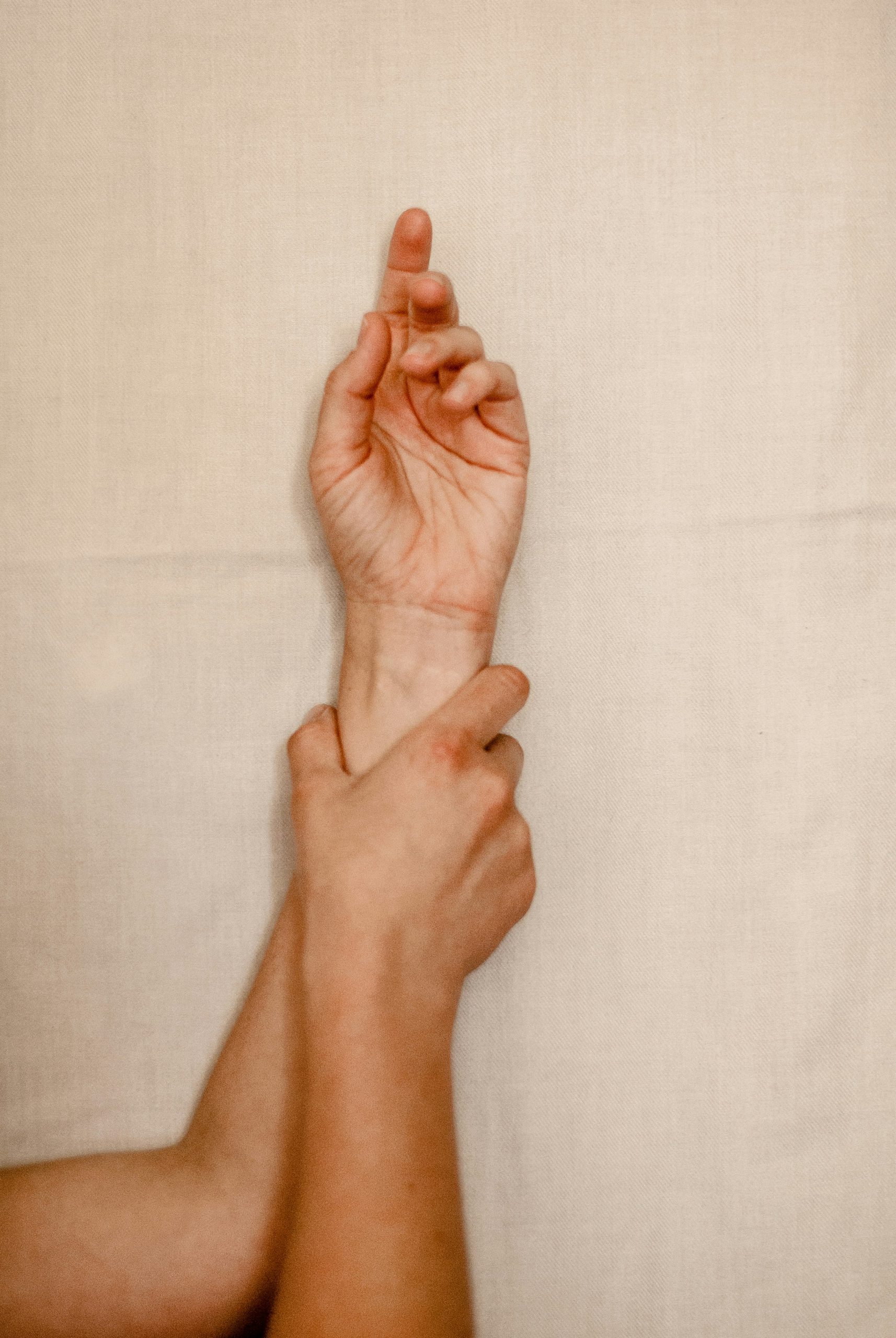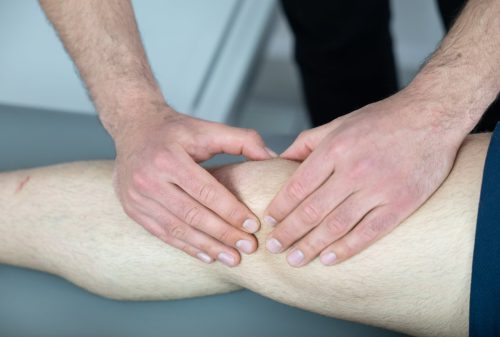The carpal tunnel or carpal canal are synonymous terms referring to the anatomy of the hand and its tendons, blood vessels, and nerves. Some of the tendons that allow the fingers to grasp and touch pass in a bundle through a relatively narrow tunnel formed by the wrist bones on one side and a rigid ligament called the transverse carpal ligament on the other. Besides the tendons, nerves and blood vessels also pass through this tunnel, creating quite a bit of congestion in a small space.
Carpal Tunnel Syndrome
Description
The nerve of particular concern here is the median nerve, which, when compressed as it passes through the carpal tunnel, causes all the symptoms of this syndrome. It is a combined sensory and motor nerve, conveying information from certain fingers to the brain while also activating some hand and finger muscles, including the thumb.
Compression of this nerve can be caused by various factors, such as tendon thickening, swelling in the carpal canal, changes in the shape of the wrist bones, thickening of the transverse carpal ligament, or a combination of these factors. Although many people suffer from this syndrome today, it is difficult to pinpoint a single unifying cause. It is believed that most cases are due to a genetically inherited narrower carpal canal (narrower space for tendons and the nerve), along with certain lifestyle factors and degenerative changes.
Symptoms of this condition usually develop gradually, starting with temporary tingling in the fingers, often at night or in the morning after sleeping, which later may persist throughout the day. Besides tingling or numbness in the fingers and hand, swelling in the thumb or fingers may develop, which may or may not be accompanied by pain. Eventually, muscle weakness can occur, leading to a weaker grip. Patients often notice this only when they begin dropping objects, often their morning coffee cup. In advanced stages, the hand may lose its grip, making it difficult to hold small objects.
Apart from inherited predispositions, many factors may contribute to carpal tunnel syndrome. Initially, systemic conditions that may cause carpal tunnel syndrome as a symptom should be ruled out, such as diabetes, rheumatoid arthritis, trauma, tumors, or cysts in the area, and fluid retention in tissues due to pregnancy or menopause. After ruling out these conditions, overuse of tendons in the carpal canal due to specific jobs or sports that cause tendon shortening becomes the most common cause. These include cleaning, typing, masonry, weightlifting, throwing sports, massage therapy, physical therapy, and others. Additionally, increased stiffness in the palmar fascia, which is a wide, thick, subcutaneous connective tissue covering, whether from physical exertion or pathological processes (such as Dupuytren’s contracture), can be a risk factor for carpal tunnel syndrome.
Diagnosing this syndrome is challenging. Similar symptoms can be caused by pressure on nerve roots in the cervical spine due to degenerative or other processes. In my practice, I often encounter cases with combined causes, where hand tingling originates both from nerve compression in the neck and within the carpal canal. Therefore, a thorough specialist examination is essential, and it may be necessary to conduct an EMG to determine the exact level of nerve damage. Only after a precise diagnosis can specific treatment be undertaken. Carpal tunnel syndrome almost exclusively affects adults and is three times more common in women, presumably due to a narrower canal in women than in men. It typically affects both hands, with symptoms usually being more severe in the dominant hand (right for right-handed individuals, left for left-handed ones).
Ultrasound or MRI are generally unhelpful in diagnosing this syndrome, although they may be indicated in specific cases.
Once other potential causes of the symptoms (tingling, sharp or dull pain, swelling, hand muscle weakness) are ruled out, appropriate treatment can begin, which may be either conservative or surgical.
In conservative treatment, medications, typically nonsteroidal anti-inflammatory drugs (NSAIDs) such as aspirin, Voltaren, and ibuprofen, are used. If these do not bring results, treatment with corticosteroids, usually in the form of injections at the pressure site (carpal tunnel), may be considered. All these treatments have limited, temporary effects and are rarely used alone. The core of non-surgical treatment is physiotherapy.
 The classic physiotherapy approach includes methods such as electrotherapy, laser therapy, magnetic therapy, radiofrequency therapy, stretching, and sometimes strengthening the muscles whose tendons pass through the carpal tunnel. The main goal of these methods is to reduce inflammation and reactive processes in the tissues in and around the carpal tunnel, thus relieving pressure on the nerve. Many who have undergone these procedures know that any improvement is often limited and temporary.
The classic physiotherapy approach includes methods such as electrotherapy, laser therapy, magnetic therapy, radiofrequency therapy, stretching, and sometimes strengthening the muscles whose tendons pass through the carpal tunnel. The main goal of these methods is to reduce inflammation and reactive processes in the tissues in and around the carpal tunnel, thus relieving pressure on the nerve. Many who have undergone these procedures know that any improvement is often limited and temporary.
Newer approaches aim to relieve pressure by reducing the stiffness of the carpal tunnel, both its bony and connective parts. This is achieved through manual mobilization and manipulation of the small hand joints, as well as myofascial release of the connective tissue using various techniques. Combined with relaxation exercises and specific self-massage techniques performed by the patient throughout the day, these methods offer significantly better and longer-lasting results.
The tension model (click for reading) broadens the understanding of carpal tunnel syndrome beyond the hand and tunnel to include the forearm, arm, neck, and thoracic spine, incorporating habitual components in its onset. Generally, it affects patients whose work or daily activities involve strong and prolonged gripping or static hand and finger positions for extended periods (like computer work). By altering movement mechanics, body positioning, and activating distant muscles in daily movements, the force exerted by flexor tendons through the carpal tunnel is naturally reduced. This decrease in force reduces nerve compression and thereby indirectly alleviates pressure. Combined with the manual therapy described, we can offer long-term relief to most individuals suffering from this uncomfortable syndrome. As always, achieving desired results requires patient understanding and cooperation, especially for therapies that must be conducted outside the clinical setting (such as exercises, self-massage, changing positions during daily work, etc.).
If, after persistent and comprehensive physical therapy, the results are unsatisfactory, surgery remains an option. The procedure is simple and quick, involving surgical release of the transverse ligament. The incision is small, healing and recovery are fast, and the results are generally satisfactory. However, a small percentage of patients may experience chronic issues post-surgery, or some symptoms may return after a period of absence. Depending on the cause, solutions may include further physical therapy or repeat surgery.
Warning!
Delaying surgery is inadvisable. Once nerve damage progresses to the point of small hand muscle atrophy, physical therapy is ineffective, and surgery will only relieve tingling and pain. Muscle strength recovery is no longer possible, leading to permanently reduced hand function. Therefore, a coordinated treatment decision, involving an orthopedic specialist or neurosurgeon along with a physical therapist, is crucial. This decision considers clinical condition, symptom duration, EMG results, other symptoms and conditions, previous therapies, and symptom intensity to determine the best treatment approach in each specific case.






